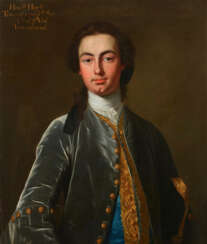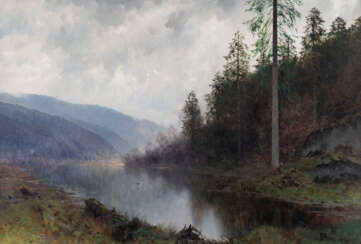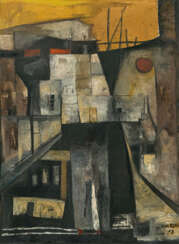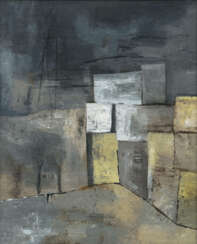rams

Allan Ramsay was a prominent Scottish portrait-painter.
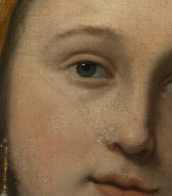

Allan Ramsay was a prominent Scottish portrait-painter.


Titian Ramsay Peale was an American artist, naturalist, and explorer from Philadelphia, Pennsylvania. He was a scientific illustrator whose paintings and drawings of wildlife are known for their beauty and accuracy.
Peale was a member of several high-profile scientific expeditions. In 1819-1820, he and Thomas Say accompanied Stephen Harriman Long on an expedition to the Rocky Mountains. He was also a member of the United States Exploring Expedition (1838-1842).
Starting around 1855 Peale became an enthusiastic amateur photographer. Many of his photographs featured buildings and landscapes in and around Washington D.C. He joined a local club with other amateur photographers and participated in field trips, photo exchanges and contests. By the end of the Civil War, his interest in photography waned and he only occasionally took pictures.


Titian Ramsay Peale was an American artist, naturalist, and explorer from Philadelphia, Pennsylvania. He was a scientific illustrator whose paintings and drawings of wildlife are known for their beauty and accuracy.
Peale was a member of several high-profile scientific expeditions. In 1819-1820, he and Thomas Say accompanied Stephen Harriman Long on an expedition to the Rocky Mountains. He was also a member of the United States Exploring Expedition (1838-1842).
Starting around 1855 Peale became an enthusiastic amateur photographer. Many of his photographs featured buildings and landscapes in and around Washington D.C. He joined a local club with other amateur photographers and participated in field trips, photo exchanges and contests. By the end of the Civil War, his interest in photography waned and he only occasionally took pictures.


Allan Ramsay was a prominent Scottish portrait-painter.


Ruth Davidson Abrams, a Jewish-American painter, left a lasting impact on the art world. As the art director at the Research Association of The New School and a lecturer at Parsons The New School for Design, she influenced aspiring artists.
Abrams gained recognition for her outer-space-themed paintings, notably "There Are Unknown Elements in the Universe as Old as Mankind" (1962). She actively engaged in art classes led by influential artists like Alexander Archipenko and William Zorach, known for their abstract approach. Despite being overlooked in a male-dominated era, Abrams' talent is now acknowledged. Her papers are preserved at the Yeshiva University Museum and the Smithsonian Archives of American Art. She collaborated with renowned artists such as William Zorach, Alexander Archipenko, and John D. Graham.


Ludvig Skramstad is a Norwegian landscape painter.


Ludvig Skramstad is a Norwegian landscape painter.


Carol Rama, actually Olga Carolina Rama, was an Italian self-taught artist. Her paintings embrace erotic and sexual identity with particular references to female sensuality. Mussolini's fascist regime deemed her work obscene and they were stigmatised as pornography.
By the early 1950s, Karol Rama was painting irregular geometric compositions of rhythmic rhombuses and squares, often connected by long spider-like lines or forming a directed field of implied movement.
Gradually she began to abolish the geometric conventions of concrete art. And after more than thirty years of inventing poisonous abstractions, Rama returned to figuration.
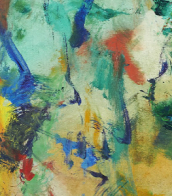

Carol Rama, actually Olga Carolina Rama, was an Italian self-taught artist. Her paintings embrace erotic and sexual identity with particular references to female sensuality. Mussolini's fascist regime deemed her work obscene and they were stigmatised as pornography.
By the early 1950s, Karol Rama was painting irregular geometric compositions of rhythmic rhombuses and squares, often connected by long spider-like lines or forming a directed field of implied movement.
Gradually she began to abolish the geometric conventions of concrete art. And after more than thirty years of inventing poisonous abstractions, Rama returned to figuration.


Carol Rama, actually Olga Carolina Rama, was an Italian self-taught artist. Her paintings embrace erotic and sexual identity with particular references to female sensuality. Mussolini's fascist regime deemed her work obscene and they were stigmatised as pornography.
By the early 1950s, Karol Rama was painting irregular geometric compositions of rhythmic rhombuses and squares, often connected by long spider-like lines or forming a directed field of implied movement.
Gradually she began to abolish the geometric conventions of concrete art. And after more than thirty years of inventing poisonous abstractions, Rama returned to figuration.


Carol Rama, actually Olga Carolina Rama, was an Italian self-taught artist. Her paintings embrace erotic and sexual identity with particular references to female sensuality. Mussolini's fascist regime deemed her work obscene and they were stigmatised as pornography.
By the early 1950s, Karol Rama was painting irregular geometric compositions of rhythmic rhombuses and squares, often connected by long spider-like lines or forming a directed field of implied movement.
Gradually she began to abolish the geometric conventions of concrete art. And after more than thirty years of inventing poisonous abstractions, Rama returned to figuration.


Carol Rama, actually Olga Carolina Rama, was an Italian self-taught artist. Her paintings embrace erotic and sexual identity with particular references to female sensuality. Mussolini's fascist regime deemed her work obscene and they were stigmatised as pornography.
By the early 1950s, Karol Rama was painting irregular geometric compositions of rhythmic rhombuses and squares, often connected by long spider-like lines or forming a directed field of implied movement.
Gradually she began to abolish the geometric conventions of concrete art. And after more than thirty years of inventing poisonous abstractions, Rama returned to figuration.








Carol Rama, actually Olga Carolina Rama, was an Italian self-taught artist. Her paintings embrace erotic and sexual identity with particular references to female sensuality. Mussolini's fascist regime deemed her work obscene and they were stigmatised as pornography.
By the early 1950s, Karol Rama was painting irregular geometric compositions of rhythmic rhombuses and squares, often connected by long spider-like lines or forming a directed field of implied movement.
Gradually she began to abolish the geometric conventions of concrete art. And after more than thirty years of inventing poisonous abstractions, Rama returned to figuration.













